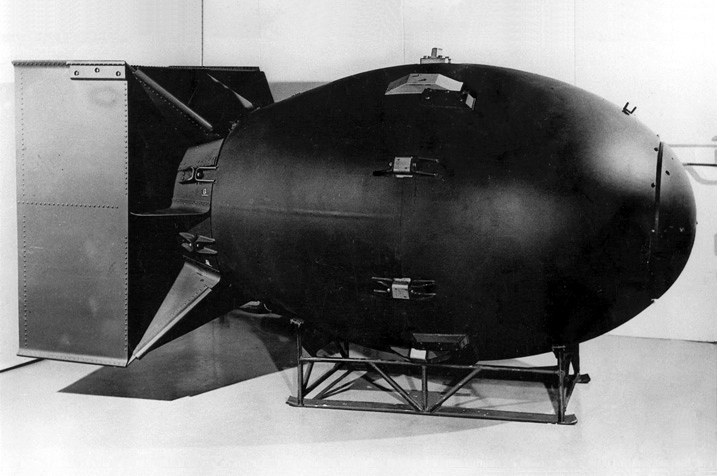The anniversary of the bombings on Hiroshima and Nagasaki recently passed by, which made me think-"How can something so huge that causes destruction to this extent be created?". Then, a few days later, I also went and saw the movie Oppenheimer, which further added fuel to the fire and made me think about how it all works. So, I thought to share what I had learnt with the world in this post
What is a nuclear bomb?
A nuclear bomb is basically a bomb that gets its explosive energy from nuclear reactions i.e. mainly fission or a combination of fusion and fission. This nuclear reaction is mainly derived from the isotopes of Uranium and Plutonium. The radioactive isotope of uranium that is used is U238 and the isotope of plutonium is Pu239.
Types of Nuclear Bombs
There are mainly two types of Nuclear Bombs-
(1) Atom bomb-An atom bomb is a type of nuclear bomb that works on the
principle of nuclear fission. Fission basically means the splitting of a heavy
atom into two comparatively lighter atoms. In fusion bombs, the isotopes of
Uranium and Plutonium (U235 & Pu239) are used most
commonly as they readily undergo fission.
The fission process is started by bombarding the isotopes of the radioactive
elements with slow moving neutrons. This starts the process of fission, which
is self-sustaining as a few neutrons are released after fission, which then go
and further bombard other atoms.
This same concept is used in nuclear reactors to generate electricity but
Boron rods are present inside the reactors to absorb the extra neutrons
produced so that the reaction doesn't go out of control.
(2) Thermonuclear bomb-A thermonuclear bomb, also known as a hydrogen
bomb, works on the principle of nuclear fusion. However, the process of fusion
requires extremely high temperatures. These temperatures are created by first
detonating a small fission bomb, and then using it to start the fusion
process, which is also self sustaining once started.
The isotopes of Hydrogen, Deuterium and Tritium are used as fuel in fission
bombs. The gamma rays and x-rays produced by the fission are used to heat the
hydrogen to thermonuclear temperatures, which then begins the process of
fusion.
Thermonuclear bombs are comparatively harder to design as compared to fission
bombs and till date, only six countries, i.e. USA, China, France, United
Kingdom, Russia and India have successfully designed and tested thermonuclear
bombs.
What were the type of bombs dropped on Hiroshima and Nagasaki?
Little Boy-The bomb dropped on Hiroshima on 6 August 1945 by the US was named 'Little Boy'. This bomb consisted of a core of U235 and worked on the principle of fission. This bomb exploded above the city of Hiroshima with an explosive power equal to about 15,000 tons of TNT, which devastated the city and contaminated the area with harmful radiation.

|
| The Little Boy bomb dropped on Hiroshima |

|
| The Fat Man bomb dropped on Nagasaki |
That is all for this post. Follow this blog to get your mind blown with awesome facts on technology.
Cheers,
Aarav Iyer
References:
(1) https://ahf.nuclearmuseum.org/ahf/history/science-behind-atom-bomb/
(2) (image and content) https://en.wikipedia.org/wiki/Nuclear_weapon

excellent aarav op..........was eagerly waiting for your post after getting damm bored with anirudha's post thank you 💕💕💕
ReplyDeleteYou also have 2 more websites:
ReplyDeletehttps://pycodingguide.blogspot.com/
https://boolexplainers.blogspot.com/
What are these websites for?
Delete